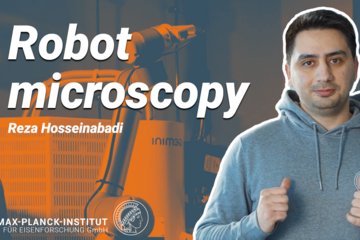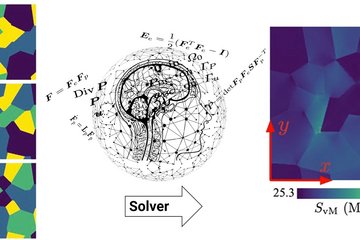All genres
621.
Journal Article
Effect of climb on dislocation mechanisms and creep rates in γ’-strengthened Ni base superalloy single crystals: A discrete dislocation dynamics study. Acta Materialia 61 (10), pp. 3709 - 3723 (2013)
622.
Journal Article
Viscous coalescence of droplets: A lattice Boltzmann study. Physics of fluids 25 (5), 052101 (2013)
623.
Journal Article
Nanocrystalline Fe–C alloys produced by ball milling of iron and graphite. Acta Materialia 61 (9), pp. 3172 - 3185 (2013)
624.
Journal Article
On dislocation involvement in Ti–Nb gum metal plasticity. Scripta Materialia 68 (10), pp. 805 - 808 (2013)
625.
Journal Article
Atom Probe Tomography Studies on the Cu(In,Ga)Se2 Grain Boundaries. Journal of Visualized Experiments 74, e50376 (2013)
626.
Journal Article
Ab initio and atomistic study of generalized stacking fault energies in Mg and Mg–Y alloys. New Journal of Physics 15 (4), pp. 043020-1 - 043020-19 (2013)
627.
Journal Article
Measurement of the indium concentration in high indium content InGaN layers by scanning transmission electron microscopy and atom probe tomography. Applied Physics Letters 102 (13), 132112 (2013)
628.
Journal Article
Ab initio study of single-crystalline and polycrystalline elastic properties of Mg-substituted calcite crystals. Journal of the Mechanical Behavior of Biomedical Materials 20, pp. 296 - 304 (2013)
629.
Journal Article
Grain boundary segregation in a bronze-route Nb3Sn superconducting wire studied by atom probe tomography. Superconductor Science and Technology 26, pp. 055008-1 - 055008-7 (2013)
630.
Journal Article
Maintaining the equipartition theorem in small heterogeneous molecular dynamics ensembles. Physical Review E 87 (3), pp. 030101-1 - 030101-4 (2013)
631.
Journal Article
Thermodynamics of carbon solubility in ferrite and vacancy formation in cementite in strained pearlite. Acta Materialia 61 (5), pp. 1773 - 1784 (2013)
632.
Journal Article
Direct evidence for the formation of ordered carbides in a ferrite based low-density Fe–Mn–Al–C alloy studied by transmission electron microscopy and atom probe tomography. Scripta Materialia 68 (6), pp. 348 - 353 (2013)
633.
Journal Article
Self-consistent scale-bridging approach to compute the elasticity of multi-phase polycrystalline materials. Materials Research Society Symposia Proceedings 1524, pp. 17 - 23 (2013)
634.
Journal Article
Lattice Boltzmann modeling of advection-diffusion-reaction equations: Pattern formation under uniform differential advection. Communications in Computational Physics 13, pp. 741 - 756 (2013)
635.
Journal Article
Synthetische Fluorapatit/Polymer-Dentalkomposite, basierend auf dem Vorbild Haizahn-Enameloid. BioNanoMaterials 14, p. 136 (2013)
636.
Journal Article
Influence of Al content and precipitation state on the mechanical behavior of austenitic high-Mn low-density steels. Scripta Materialia 68 (6), pp. 343 - 347 (2013)
637.
Journal Article
Ab initio identified design principles of solid-solution strengthening in Al. Science and Technology of Advanced Materials 14 (2), 025001 (2013)
638.
Journal Article
Single-particle fluctuations and directional correlations in driven hard-sphere glasses. Physical Review E 88 (2), 022129, p. 9 pp (2013)
639.
Journal Article
Inheritance of Dislocations and Crystallographic Texture during Martensitic Reversion into Austenite. ISIJ International 53 (7), pp. 1286 - 1288 (2013)
640.
Journal Article
Transition from Diffusive to Displacive Austenite Reversion in Low-Alloy Steel. ISIJ International 53 (12), pp. 2275 - 2277 (2013)











